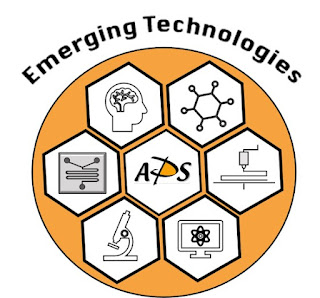Get To Know Prof Clive Roberts
A career trying to help 'Emerging Technologies' be accepted
Whilst I still feel as excited as ever by the potential of the latest technologies and ideas to move research forward, I can reflect on a long career where I have seen many technologies emerge, some to blossom, some to disappear and then perhaps come back again.
For me personally I was so lucky to have had a PhD in Physics at Imperial College in the late 80's building and using the revolutionary Scanning Tunelling Microscope invented in 1981 at IBM to visualise and manipulate atoms and molecules. This tool changed the way we thought about ultra-resolution microscopy and provided a huge impetus for other technologies such as electron microscopy to improve. For me this led to my first research post in the School of Pharmacy, Nottingham University to apply STMs and the sister technique Atomic Force Microscopy in biomolecular and pharmaceutical analysis. Working in a multidisciplinary area such as Pharmacy with many wonderful collaborators from around the UK and internationally during the 90’s I was exposed to much new thinking on the use of lipids, polymers and viral particles for delivery of drugs and nucleic acids. This all seemed so challenging at the time, with so many hurdles to reliable manufacture and delivery to the humans, and yet this type of work two decades later has been a key part to the amazing response to COVID vaccine development around the world.
With so much advancement and availability of new analytical tools in the 90s such as high-speed Raman imaging, cryo-electron microscopy and the many probe microscopes I took the plunge with colleagues to create a spin-out company specialising in their application to pharmaceuticals. The company Molecular Profiles Ltd (now part of Catalent), was a wonderful learning experience in creating a ‘market’ for emerging technologies in a highly competitive commercial sector. After some years helping to promote these new approaches the company expanded considerably, moving into new sectors such as clinical trials manufacture, but always at its heart was the desire to bring the latest technology to the market to solve real world problems.
I have always felt it is important to keep on evolving in the research I am doing, looking for new areas to excite me. For me this is now working with some amazing colleagues to help bring 3D Printing to medicines manufacture. 3D printing itself can trace its emergence to the 1970s and the first applications towards pharma in the 90s but for me it really blossomed in the 2010s with huge leaps forward in capability and the awareness that if material science challenges could be overcome and clinical needs matched to its abilities this platform technology could make a real positive impact on public health. That excites and motivates me. Maybe there will be another new emerging technology in the future but for now 3D Printing is definitely enough! This is why for me the APS Emerging Technologies group is such an exciting venture.


Comments
Post a Comment